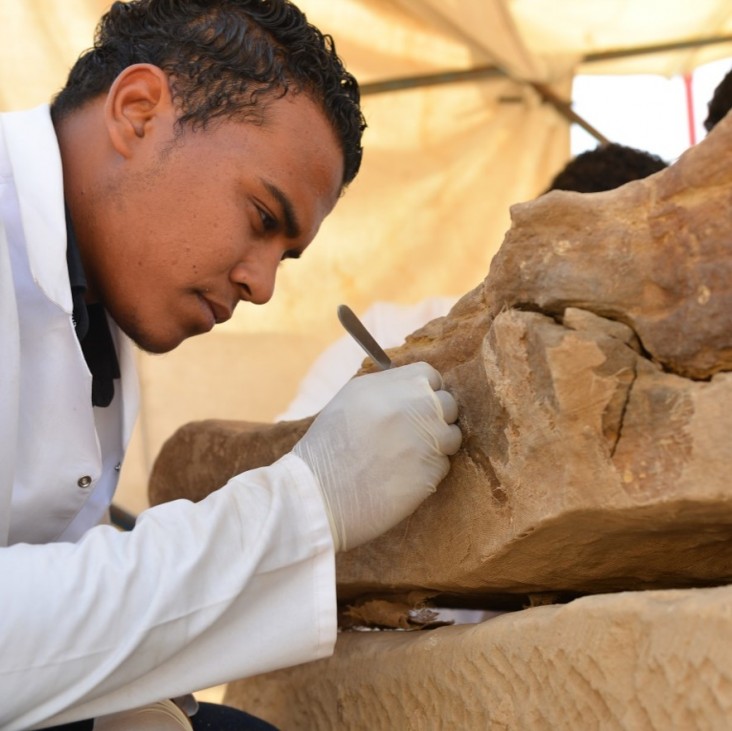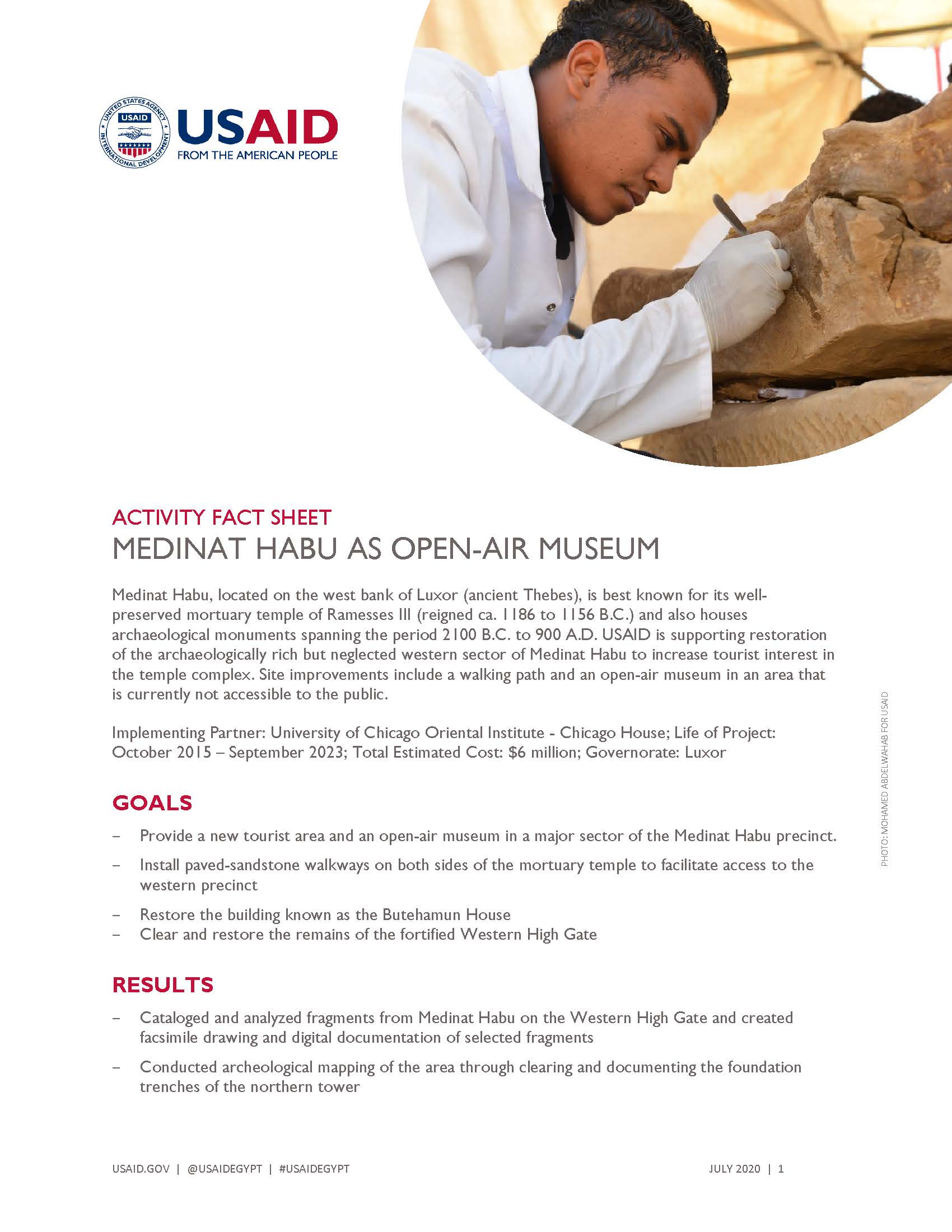Speeches Shim

An archaeologist cleans a stone fragment at Medinat Habu.
Mohamed Abdelwahab for USAID
Medinat Habu, located on the west bank of Luxor (ancient Thebes), is best known for its well- preserved mortuary temple of Ramesses III (reigned ca. 1186 to 1156 B.C.) and also houses archaeological monuments spanning the period 2100 B.C. to 900 A.D. USAID is supporting restoration of the archaeologically rich but neglected western sector of Medinat Habu to increase tourist interest in the temple complex. Site improvements include a walking path and an open-air museum in an area that is currently not accessible to the public.
Implementing Partner: University of Chicago Oriental Institute - Chicago House; Life of Project: October 2015 – September 2023; Total Estimated Cost: $6 million; Governorate: Luxor
GOALS
- Provide a new tourist area and an open-air museum in a major sector of the Medinat Habu precinct.
- Install paved-sandstone walkways on both sides of the mortuary temple to facilitate access to the western precinct
- Restore the building known as the Butehamun House
- Clear and restore the remains of the fortified Western High Gate
RESULTS
- Cataloged and analyzed fragments from Medinat Habu on the Western High Gate and created facsimile drawing and digital documentation of selected fragments
- Conducted archeological mapping of the area through clearing and documenting the foundation trenches of the northern tower
- Restored walkways to facilitate public access to the western precinct, the House of Butehamun, and an open-air museum and capped the Ramesses III mud-brick walls along the stone pavement with new bricks
- Restored the Ramesses III-period paved walkways on the southern, western, and northern sides of the mortuary temple with thick sandstone slabs; the paved walkway now extends along the entire length of the southern side of the mortuary temple and along the southwest corner where restoration is now proceeding along the western side
- Stabilized two of the columns of the Butehamun House and provided hands-on training to 23 Egyptian university graduates (6 men and 17 women) in a field school on conservation and maintenance



Comment
Make a general inquiry or suggest an improvement.